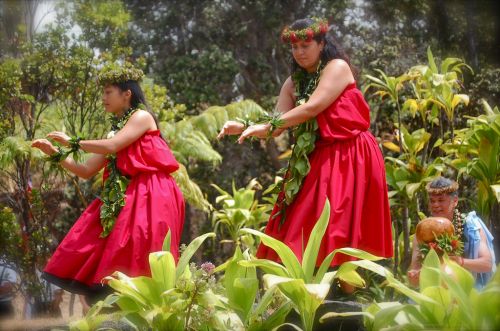Hula
Hula is a traditional dance of Hawaii. What about its origin? There are several legends about it. Here is one of them.
Pele (the goddess of fire) was trying to find a home for herself running away from her sister Namakaokaha'i (the goddess of the oceans). After long search she finally found an island where the waves could not reach her. There at chain of volcanic craters on the island of Hawaii she danced the first dance of hula. The dance was a symbol of her victory.
 Hula
Hula
The dancers of hula are accompanied by traditional chant or song called mele. Two basic styles of hula are preformed. Traditional one, from the time before Western influence, is called kahiko. It still exist in western parts of Hawaii.
The second hula, which was created under Western influence in the 19th and 20th century, is called ‘auna. In ‘auna instruments like guitar, ‘ukulele and double bass (contrabass) are used. They changed the traditional melody. Christianity on the other side influenced the costumes of the women dancers which are less revealing.
Hula kahiko or hula ‘olapa was often performed as kind of entertainment of the tribal chief. But there were occasions where it had religious meaning. Hula was then performed in the heiau (temples). Chants at hula are actually stories of creation, royalty and other important events and people.
All sort of traditional instruments are used in hula - different drums (ipu, ipu heke, pahu, puniu), ‘Ili’ili (water worn volcanic stones ), ‘Uli’uli (rattles), Pu’ili (bamboo sticks) and Kala’au (rhythm sticks). Male dancers sometimes wore the dog’s tooth anklets. They created sound too. Traditional female dancers wore the paʻu, or wrapped skirt. They were topless. Today this form of dress is not used anymore.
Dancers wore lei (traditional flower garlands) and decorations such as necklaces, bracelets, and anklets. Traditional male dancers wore the everyday malo, or loincloth. They also wore traditional jewellery. Nowadays hula is thought in special schools called halau. The teacher of hula is the kumu (“source of knowledge”) hula.